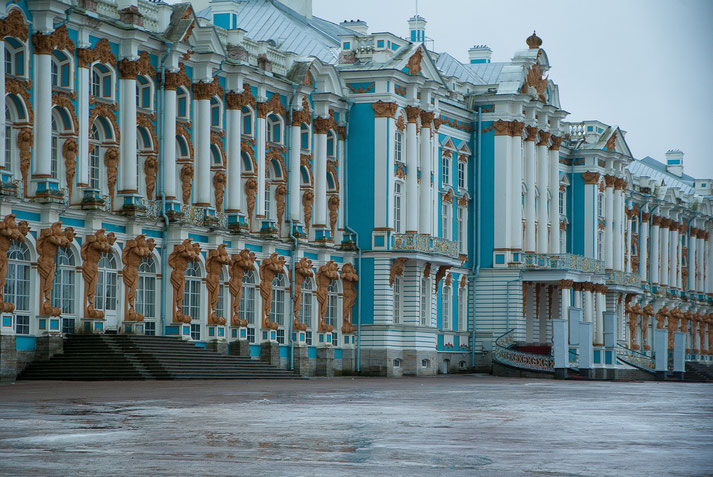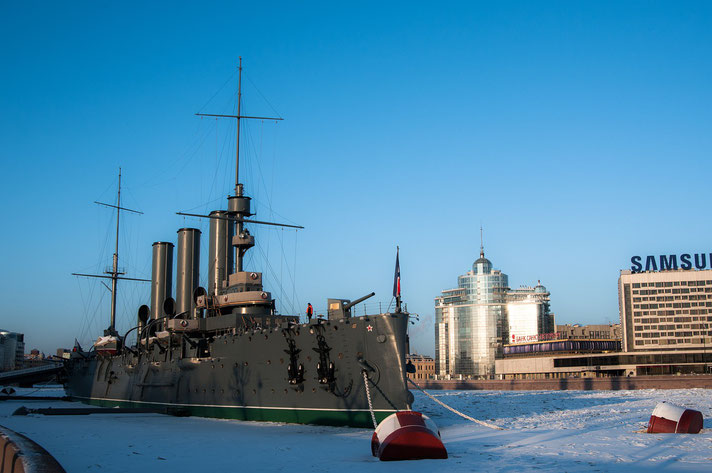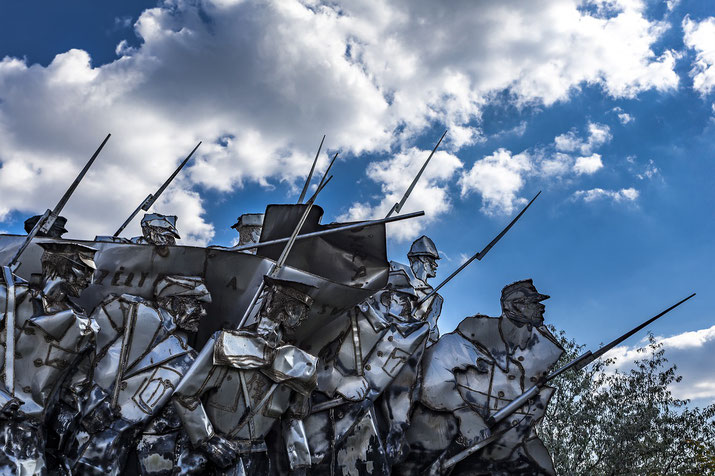Nicholas II and the crisis of 1905: A tsar's reluctance to reform

The Revolution of 1905 is one of the most significant events in Russian history, as it was one of the first attempts at forcing the Russian tsar to change his political policies.
The tsar at the time, called Nicholas II, had resisted any change to his absolute power, but the crises throughout 1905 finally convinced him that if he didn't listen to his people, a greater disaster could unfold.
Ultimately, the events of 1905 would be a smaller version of the bigger revolution that would take place twelve years later, in 1917.
Many historians point to the fact that Nicholas II did not really respond to the needs of the common people in 1905, which set the stage for 1917.
Background
The revolution of 1905 was caused by growing problems within Russian society. Tensions between the wealthy aristocracy and the poor common people had been exacerbated by poor agricultural harvests, which had led to a number of famines.
As increasing numbers of Russians lived on the poverty line, it appeared to many that those in power, including the Tsar, did not care about their plight.
The treatment of industrial workers in Russia in particular was abysmal. They worked long hours for little pay in dangerous conditions.
As the industrial revolution progressed, more and more people were moving to the cities to work in the factories.
This led to overcrowding and poor living conditions. As a result, the three million workers in Russia were one of the lowest paid workforces in Europe at the start of the 20th century.
All of these factors contributed to the rising unrest in the cities.
The anger of factory workers increased in the final months of 1904 due to a number of reasons.
First, there was a severe economic downturn which led to widespread layoffs. Second, the Tsar had recently declared War on Japan which meant that conscription was increased, leading to even more unemployment.
Finally, food prices had risen sharply due to a bad harvest and poor transport infrastructure.
These factors led to the formation of workers' councils (called soviets) in the major cities which called for a general strike on January 22, 1905.
The call for change
The tsars of the Romanov dynasty had always believed that they held their power as a gift from God, and that their decisions were unquestionable, particularly by the common people.
Nicholas II also believed that he made decisions that were in the best interests of his people, and that even if he was unpopular, he acted like a caring 'father' of the Russian people, who he considered to be his 'children'.
However, a century of social unrest in Russia showed that the successive tsars were not aware of how difficult life was for many common people. This was due to the fact that the ruler rarely met commoners.
The tsars spent their time in palaces, surrounded by the wealthy elites of Russian society.
The tsar relied upon information about the Russian people provided by the aristocracy.
Unfortunately, the nobles only told the tsar what they wanted him to hear. As a result, when the tsar made decisions about the commoners, he probably believed he was doing the right thing, but was probably only doing what the wealthy elites wanted him to do.
By 1904, the people of Russia were calling for the tsar to provide avenues for them to express their concerns to him directly, rather than relying upon the nobles to speak on their behalf.
A number of political groups formed who offered different suggestions for how this might happen.
Some sought for councils of common people to be elected as an advisory body to the tsar.
Others called for a parliament to be formed which could elect minsters that worked with the tsar to form laws, or ratify new laws from the tsar himself, in the interests of all Russians.
Unfortunately, each of these proposals had been rejected by several tsars, who believed that any attempt by the common people to interfere in their decision-making process to undermine their absolute power from God.
Despite a number of attempts to change the tsar's mind, many Russians began to despair that political change would never happen in Russia.
This despair led to some groups, like the SRs (the Socialist Revolutionary Party), to turn to violence to make their voice heard.
In fact, on the 13th of March 1881, Tsar Alexander II had been assassinated by members of a political group known as Narodnaya Volya (the 'People's Will'), as a way of forcing change.
Unfortunately, this only led the following two tsars (Alexander III and Nicholas II) to resist any changes as a way of showing that they would not give in to terrorists.
Bloody Sunday
In late 1904, some still believed that change could still be achieved by peaceful means.
One particular man became a significant figure during political unrest at the Putilov Steel Plant in St Petersburg. His name was Georgy Gapon.
Gapon was a Russian Orthodox priest who believed that the Tsar was essentially a good man who had been misled by his advisers.
Gapon also believed that if the tsar could just see how unhappy his people were for himself, then Nicholas II would want to help him.
These beliefs made him a popular figure among the workers.
In the first few weeks of January 1905, Gapon drafted a petition to the tsar, asking for improved working conditions.
Over 150,000 workers signed his petition, and, on January 22, 1905, Father Gapon led a peaceful march to the Winter Palace to deliver the petition to the tsar, face-to-face.
However, Nicholas II was not actually at the Winter Palace at the time. Instead, he was at his palace in Tsarskoye Selo, about 25 miles south of St. Petersburg.
As the workers marched towards the palace, the soldiers guarding the royal residence opened fire upon them.
Over 1000 people were killed or wounded in the gunfire and this event became known as 'Bloody Sunday'.
The Revolution of 1905
When news about Bloody Sunday had spread over Russia, there was a lot of anger directed at the Tsar.
Many people could not understand how their leader, who was meant to care for his subjects, could allow his soldiers to kill unarmed, peaceful protestors.
Many people started referring to Tsar Nicholas II as ‘Bloody Nicholas’.
Bloody Sunday is now seen as the start of the Revolution of 1905. During this year, there were widespread attempts to force the tsar to change his policies.
There was so much anger and resentment across the country that the tsar realised that if he didn't react, he could face an armed revolution from the Russian people.
After Bloody Sunday, there were strikes and uprisings all over Russia. Thousands of workers in cities all over the country refused to turn up to their jobs as a way of showing support for the workers in St Petersburg.
Within a month of the massacre, around 800,000 industrial workers were on strike across Russia.
People expressed their anger in more violent ways as well. On the 17th of February, Grand Duke Sergei Alexandrovich, the tsar’s uncle and brother-in-law, was assassinated by a bomb thrown by a member of the SR (Socialist Revolutionary Party).
Creation of soviets
Nicholas II was made aware of these events by a number of his close friends and ministers.
A number of nobles warned the tsar of a potential armed revolution if he didn't act.
In a snap decision that he hoped would calm the situation, Nicholas II announced in February that he intended to create an assembly of elected people to act as his advisory body.
However, this proposal was seen as being 'too little, too late', as many feared that the tsar would manipulate any elections, resulting in only his preferred choice of people occupying the seats of this assembly.
Instead, the workers themselves formed their own group of representatives, called the soviets.
The soviets were councils of workers that sought to influence the Tsar's decision-making and government policies.
The most powerful soviet, called the St Petersburg Soviet, was created in October 1905 and it was made up of about 500 members who had been elected by workers from a hundred factories in the city.
These members represented various political groups, including Mensheviks, Bolsheviks and SRs.
The Potemkin Mutiny
As the strikes spread across Russia, it was not only the common people and workers who wanted their demands heard by the tsar.
The military as well had growing concerns about their treatment by Nicholas II. Many soldiers and sailors felt that they had to work in poor conditions, with limited access to food, water, and protection from corrupt officers.
The concerns of the military came to a head in a series of strikes and mutinies on Russian navy vessels.
The most famous of these took place on the Russian ship known as the Potemkin.
The Potemkin was a Russian warship that was based in the Black Sea. The officers on this ship had a reputation for being brutal and the conditions on board were poor.
In June 1905, the crew of the Potemkin mutinied after they were asked to eat maggot-ridden meat. The sailors arose in rebellion and killed their officers.
The mutiny quickly spread to the rest of the Black Sea fleet and soon enough, most of Russia’s navy in the Black Sea was in open rebellion against their officers.
A second naval mutiny occurred at Sevastopol in November. The members of this group demanded the end of monarchy in Russia all together.
Instead, they wanted a democracy, such as those achieved in the French and American Revolutions.
However, the mutinies were eventually suppressed, and the ships returned to the control of the Tsarist authorities.
Counter-reactions
By October 1905, it was clear that Nicholas II could no longer ignore the demands of his people.
On 17th October, he issued a document called the Manifesto of 17 October 1905 which promised some major reforms.
These reforms included civil liberties such as freedom of speech and assembly, as well as an elected parliament (the Duma).
However, the tsar's soldiers had arrested so many protestors during 1905, that many Russian political groups demanded their release before they would accept 'empty promises' from the tsar.
So, the Tsar’s newly appointed interior minister, Alexander Bulygin, was told to investigate the possibility of granting amnesty to these political prisoners.
Bulygin’s report, which was published in November, proposed that all political prisoners should be pardoned and that exiles should be allowed to return to Russia.
However, the Bulygan plan failed because it did not address the economic grievances of the workers.
It became clear that the tsar did not really intend the proposed Duma to have any decision-making powers in his government.
Nicholas II simply saw his proposal as a way of placating his angry people rather than offering real change.
As 1905 drew to a close, the anger of the people had not decreased as a result of the tsar's proposals.
So, a man called Sergei Witte was then appointed as Prime Minister of Russia by the Tsar.
He was a leading figure in the government's effort to end the revolution.
Witte believed that concessions needed to be made to the workers in order to calm them down.
Witte personally advised the Tsar to allow for the immediate election of a representative Duma for the people.
However, Nicholas was not willing to give up his power as Tsar and undermined any plans to provide an elective body like this.
As a final attempt to end the revolution, the tsar decided to respond with force. The leaders of various Russian political groups were arrested and imprisoned. Groups of striking workers and mutinous soldiers were also treated harshly and arrested.
By the end of 1905, the revolution was over, and little had been achieved.
Summary
As 1906 began, the only significant change that had resulted from the revolution was the creation of the Duma.
Even though the tsar maintained control over this body of elected officials, it was the first real step towards the change of Nicholas' absolute authority.
It gave some people the hope that the concerns of the common people might finally be heard.
Although the Revolution of 1905 did not immediately lead to the overthrow of Tsarism, it did have a number of significant effects.
Firstly, it showed that Nicholas II was no longer invincible and that his grip on power was weakening.
Secondly, it created divisions within Russian society as different groups fought for their own interests.
Lastly, it demonstrated the power of workers and peasants when they unite against a common enemy.
What do you need help with?
Download ready-to-use digital learning resources
Copyright © History Skills 2014-2024.
Contact via email
With the exception of links to external sites, some historical sources and extracts from specific publications, all content on this website is copyrighted by History Skills. This content may not be copied, republished or redistributed without written permission from the website creator. Please use the Contact page to obtain relevant permission.








